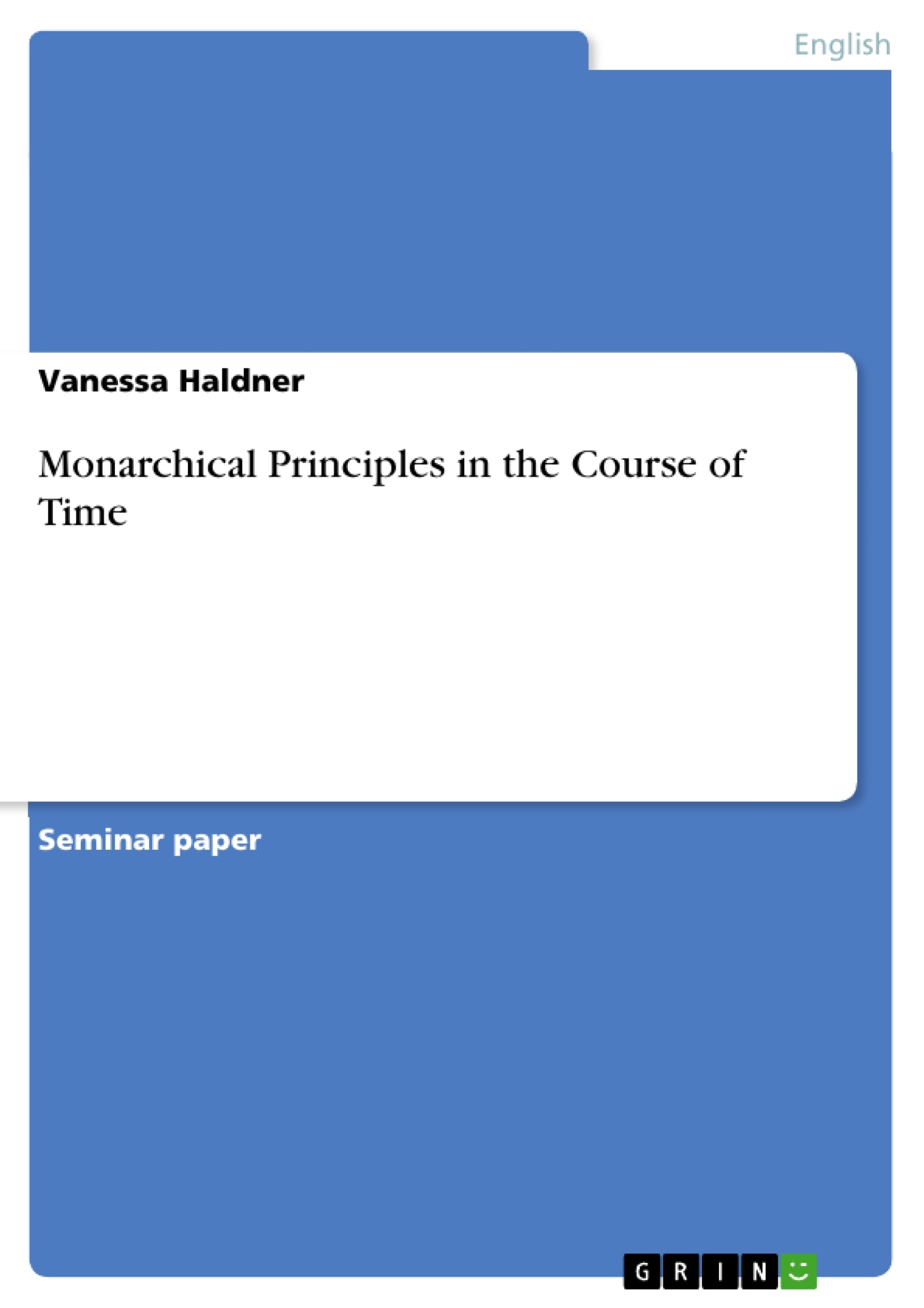This essay aims to observe and explain monarchical principles, their manifestation, as well as the change they underwent throughout different epoques. Monarchical principles are the underlying assumptions of a monarch’s reign. Since there are distinctive governmental forms of a monarchy, they differ from each other in several aspects.
Inhaltsverzeichnis (Table of Contents)
- 1 Introduction
- 2. Theoretical Framework
- 2.1. Tim Hames and Mark Leonard: Modernising the Monarchy
- 2.2. Adrian Harvey: Monarchy and Democracy: A Progressive Agenda
- 3. Analysis
- 4. Conclusion
Zielsetzung und Themenschwerpunkte (Objectives and Key Themes)
This paper aims to investigate the evolution of monarchical principles within the context of the British monarchy, exploring the adaptations and challenges faced in a contemporary democratic society. The work examines the historical context of the British monarchy, analyzes the perspectives of prominent scholars on the topic, and discusses the tensions between democratic norms and monarchical traditions.
- The historical development and contemporary relevance of monarchical principles
- The role of the monarchy in a constitutional democracy
- The challenges of adapting monarchical traditions to modern societal values
- The symbolic significance of the monarchy in a changing world
- The relationship between the monarchy, the public, and democratic processes
Zusammenfassung der Kapitel (Chapter Summaries)
The introduction sets the stage by exploring the core principles of monarchy and how they are applied in the context of the United Kingdom's constitutional monarchy. It highlights the symbolic role of Queen Elizabeth II and how her reign exemplifies stability, continuity, and unity. It further discusses the importance of tradition, moral representation, and secrecy in maintaining the relevance of the monarchy.
The theoretical framework chapter delves into the analysis of two prominent works concerning the modernization of the British monarchy. The first section examines the perspective of Tim Hames and Mark Leonard, who argue for a shift in focus towards the symbolic aspects of the monarchy while minimizing its political and religious functions. They critique the "schizophrenic identity" of the monarchy, emphasizing the need for greater transparency and accountability.
Schlüsselwörter (Keywords)
The key topics explored in this paper include constitutional monarchy, monarchical principles, symbolic representation, British monarchy, modernization, democratic norms, and the role of the monarchy in contemporary society.
- Quote paper
- Vanessa Haldner (Author), 2015, Monarchical Principles in the Course of Time, Munich, GRIN Verlag, https://www.grin.com/document/379356



